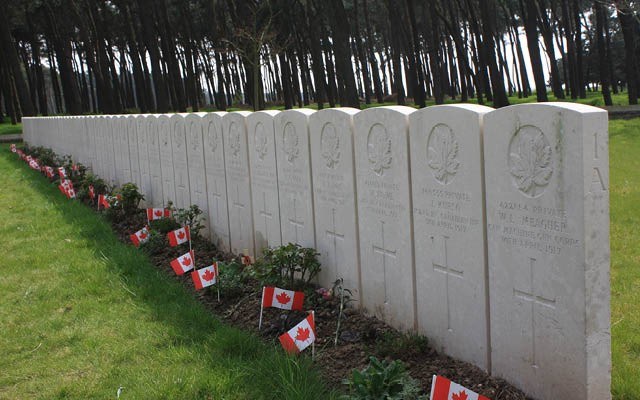With the welcome news that the Whistler Cenotaph is to be relocated to a more accessible village location this spring, it is timely that our attention be drawn to one of Canada's most historic military victories and occasions for remembrance outside of Nov. 11.
On April 9, Canadians across the country, as well as near the tiny French village of Vimy, will gather to acknowledge the 100th anniversary of the First World War's battle of Vimy Ridge.
More than 600,000 Canadians served during the Great War, largely under the command of the British General Staff. Canadian forces would assemble, train and ultimately fight under British direction with British tactics and stubbornness — despite the losses. That was until Easter 1917.
At Vimy Ridge, near the town of Arras, after three years of unimaginable loss and where a grotesque stalemate had already cost thousands of British, French and Canadian lives, the resources of almost the entire Canadian Expeditionary Force assembled for the first time. The objective: to smash the fortified German-held ridge and hopefully begin the final drive across France, towards Germany and final victory.
On a cold and rainy Easter morning, the Canadian Corps rallied below the ridge on what had been idyllic French farmland. After months of meticulous planning and preparation, the Canadians and their allies moved through intricate tunnels and kilometres of trenches, advancing just paces behind the "to-the-second" rolling barrage of the massed Canadian artillery.
By the end of the third day, the majority of the objectives, including the Vimy Ridge high points, were realized. The lightning-paced victory came at a fraction of the cost of similar offensives of this magnitude. However, this fraction still meant that nearly 10,000 Canadian injuries resulted with 3,500 dead; across the rolling French countryside.
Even with the objectives and a victory secured, the battle did not lead to a wider final offensive and armistice. The initial gains languished and a return to the slaughter and stalemate of trench warfare returned. It would be a painful 19 additional months, costing tens of thousands additional lives before the peace of November 1918.
On this 100th anniversary to mark this battle, this victory and those losses; Canadians will gather across the country and in northern France in numbers not witnessed in decades to commemorate Vimy — that time, that place, that sacrifice.
Historians continue to debate the full military significance of this battle. They argue over the true importance of the Canadian Corps fighting as a unified, Canadian-commanded force as a historic moment in the young country's journey. As Canadians, we feel uneasy celebrating a military battle that cost thousands of lives and realized a limited success to ending the war. Generally, Canadians neither naturally, nor readily, trumpet victory in war.
But this April 9, 2017, is a bit different. The 100-year anniversary, in a country that has existed for a mere 150 years, is a significant benchmark in our collective history. Today, all of those young soldiers of that battle, of that war, of that time are gone. Their sacrifice and their memory, buried in marked and unmarked graves, beneath the now lush French landscape, remain within the collective remembrance of all Canadians. Young or old, French, English, First Nations, immigrant or veteran, we each are charged to ensure that we never forget. Together, we commit ourselves to peace, and honour those whose sacrifice guaranteed our collective freedom and peace going forward.
April 9, 1917 is without question one of the most noted and significant dates in Canada's history, though we do not relish it, pound the drum or overtly celebrate it. We remember, we learn the lessons, and we offer our united promise to never forget the sacrifice in all wars and peacekeeping.
The names of the 11,000 Canadians of the First World War, who have no known graves, are etched forever into the base of the Vimy Memorial. Dedicated in 1936, the 117 hectares surrounding the memorial were gifted to the people of Canada by France in 1922. Vimy Ridge is today, and for always, sacred Canadian soil.
"...At The Going Down Of The Sun, And In Morning, We Will Remember Them."
The Whistler community is invited to place candles of remembrance at the Whistler Cenotaph on the evening of April 8 after 8 p.m. — near the time 100 years ago when Canadian troops were moving from their rear mustering areas, through the tunnels and readying for advance.




